
Tropical Paradise: The Perhentian Islands
Discover the Perhentian Islands: A Malaysian tropical paradise with pristine beaches, vibrant coral reefs, and lush jungles, perfect for relaxation and adventure.
The Perhentian Islands, located off the northeast coast of Malaysia, are a tropical haven for beach lovers, divers, and nature enthusiasts alike. Comprising two main islands, Perhentian Besar and Perhentian Kecil, these islands offer powdery white sands, crystal-clear waters, and vibrant marine life. Whether you are looking to relax under the sun or explore the underwater world, the Perhentian Islands have something for everyone. Perhentian Besar is the larger of the two islands and is known for its serene atmosphere and family-friendly resorts. It is perfect for those who prefer a more laid-back experience, with plenty of opportunities for snorkeling and diving in the coral reefs just off the shore. The island also has several jungle trails that allow you to discover the lush tropical forests and spot unique wildlife. Perhentian Kecil, on the other hand, is popular among backpackers and budget travelers. It boasts lively beaches, vibrant nightlife, and a range of affordable accommodations. Long Beach on Perhentian Kecil is particularly famous for its stunning sunrise views and bustling beach bars. For a more secluded experience, Coral Bay offers a quieter escape with gorgeous sunsets and tranquil waters. Both islands are part of a protected marine park, ensuring that the natural beauty and biodiversity are well-preserved. The waters around the Perhentian Islands are teeming with colorful fish, sea turtles, and even reef sharks, making it a prime spot for diving and snorkeling. With no motorized vehicles allowed on the islands, the Perhentians provide a genuinely peaceful and eco-friendly retreat.
Local tips in Perhentian Islands
- Visit between March and October, as the monsoon season from November to February brings heavy rains and strong winds.
- Pack light and bring cash, as there are no ATMs on the islands and credit card facilities are limited.
- Book accommodations in advance, especially during peak season, to ensure a place to stay on the island of your choice.
- Rent snorkeling gear or join a diving tour to experience the rich marine life up close.
- Respect the local wildlife and coral reefs by not touching or disturbing them while snorkeling or diving.
- Try the local seafood dishes at the beachside eateries for a taste of fresh and delicious Malaysian cuisine.
Tropical Paradise: The Perhentian Islands
The Perhentian Islands, located off the northeast coast of Malaysia, are a tropical haven for beach lovers, divers, and nature enthusiasts alike. Comprising two main islands, Perhentian Besar and Perhentian Kecil, these islands offer powdery white sands, crystal-clear waters, and vibrant marine life. Whether you are looking to relax under the sun or explore the underwater world, the Perhentian Islands have something for everyone. Perhentian Besar is the larger of the two islands and is known for its serene atmosphere and family-friendly resorts. It is perfect for those who prefer a more laid-back experience, with plenty of opportunities for snorkeling and diving in the coral reefs just off the shore. The island also has several jungle trails that allow you to discover the lush tropical forests and spot unique wildlife. Perhentian Kecil, on the other hand, is popular among backpackers and budget travelers. It boasts lively beaches, vibrant nightlife, and a range of affordable accommodations. Long Beach on Perhentian Kecil is particularly famous for its stunning sunrise views and bustling beach bars. For a more secluded experience, Coral Bay offers a quieter escape with gorgeous sunsets and tranquil waters. Both islands are part of a protected marine park, ensuring that the natural beauty and biodiversity are well-preserved. The waters around the Perhentian Islands are teeming with colorful fish, sea turtles, and even reef sharks, making it a prime spot for diving and snorkeling. With no motorized vehicles allowed on the islands, the Perhentians provide a genuinely peaceful and eco-friendly retreat.
When is the best time to go to Perhentian Islands?
Iconic landmarks you can’t miss
Perhentian Island Resort
Experience the ultimate tropical escape at Perhentian Island Resort, where pristine beaches meet vibrant marine life in a serene natural setting.

The Barat Perhentian
Experience the serene beauty and vibrant marine life at The Barat Perhentian, a luxurious resort hotel on the breathtaking Pulau Perhentian Besar.

Alunan Resort All Inclusive
Experience a slice of paradise at Alunan Resort on Petani Beach, where luxury meets nature in the heart of the Perhentian Islands.

Coral View Island Resort
Discover the tranquility of Coral View Island Resort on Pulau Perhentian Besar, where adventure meets serenity in a tropical paradise.

BuBu Long Beach Resort
Discover the ultimate tropical escape at BuBu Long Beach Resort, where stunning beaches and vibrant marine life await on Perhentian Island Kecil.

MIMPI Perhentian Resort
Discover the serene beauty of MIMPI Perhentian Resort, a beachfront paradise on Pulau Perhentian Kecil, perfect for relaxation and adventure.

Tuna Bay Island Resort
Discover the serene beauty of Tuna Bay Island Resort, an idyllic retreat on Malaysia's Perhentian Islands, offering adventure and relaxation in paradise.

Ombak Dive Resort
Discover the thrill of diving and the beauty of nature at Ombak Dive Resort on Pulau Perhentian Kecil.

Abdul Chalet
Experience the tranquility of Abdul Chalet, a charming retreat on Pulau Perhentian Besar, surrounded by stunning beaches and vibrant marine life.

Teluk Keke
Discover the untouched beauty of Teluk Keke Beach on Pulau Perhentian Besar, where pristine sands meet crystal-clear waters in a tropical paradise.

Ombak Divers
Discover the underwater wonders of Perhentian Island with Ombak Divers, a leading diving center offering unforgettable marine experiences.

Long Beach
Discover the beauty of Long Beach, a stunning public beach on Perhentian Kecil Island, where relaxation meets adventure in Malaysia's tropical paradise.

Samudra Beach Chalet
Experience the serene beauty of Samudra Beach Chalet, a tropical escape on the stunning Pulau Perhentian Besar.

BuBu Villa
Experience the charm of BuBu Villa, a tropical paradise on Pulau Perhentian Kecil, offering luxurious stays and thrilling water adventures.

Pulau Perhentian Kechil
Unwind in paradise at Pulau Perhentian Kechil, where beautiful beaches meet vibrant marine life in the heart of Terengganu, Malaysia.
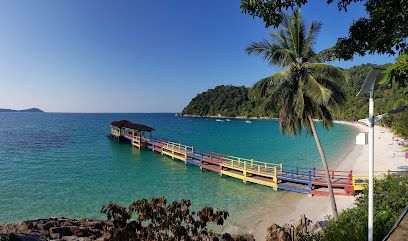
Unmissable attractions to see
Masjid Ar Rahman Pulau Perhentian
Explore the tranquil Masjid Ar Rahman in Pulau Perhentian, a stunning mosque inviting cultural immersion and spiritual reflection amidst breathtaking views.

Lata Air Berani
Discover the enchanting Lata Air Berani, a stunning waterfall on Pulau Perhentian Besar, where nature’s beauty and tranquility await amidst the South China Sea.

Shark Point
Explore the breathtaking marine life at Shark Point, a premier scuba diving destination in Pulau Perhentian Besar, Terengganu for unforgettable underwater adventures.

Romantic Beach
Experience the idyllic beauty of Romantic Beach in Pulau Perhentian Besar, where pristine sands meet vibrant marine life in a serene tropical paradise.

Turtle Bay
Discover the serene beauty of Turtle Bay in Terengganu, a coastal paradise for relaxation, snorkeling, and authentic Malaysian culture.

Adam and Eve Beach
Experience the serene beauty and adventure of Adam and Eve Beach on Pulau Perhentian Kecil, where tranquil waters meet vibrant marine life.

Marine Park Pulau Perhentian Besar
Explore the natural beauty and vibrant marine life of Marine Park Pulau Perhentian Besar, a tropical paradise in Terengganu, Malaysia.
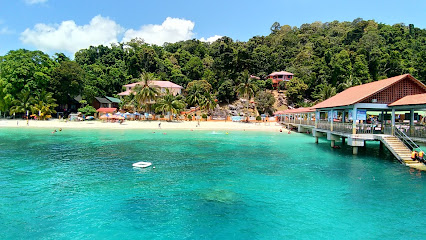
Turtle Beach
Escape to Turtle Beach, a hidden paradise in Malaysia's Terengganu, where pristine sands and vibrant marine life await every traveler seeking tranquility and adventure.

D'Lagoon Beach
Discover the pristine beauty of D'Lagoon Beach on Pulau Perhentian Kecil, a tranquil haven perfect for sunbathing, snorkeling, and enjoying Malaysian cuisine.

Jungle Trekking Cross-Island Trail
Explore the breathtaking Jungle Trekking Cross-Island Trail in Pulau Perhentian Besar for an unforgettable adventure amidst lush landscapes and vibrant wildlife.
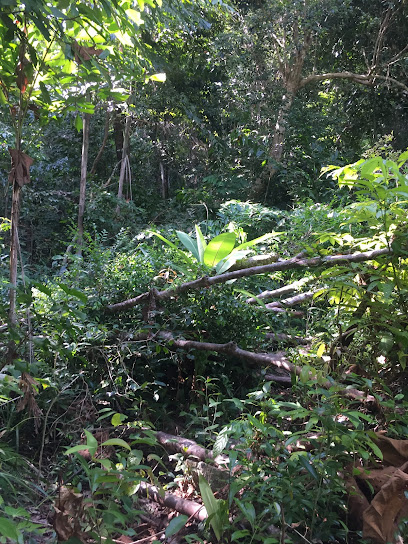
Golden Sand Beach
Discover the breathtaking beauty of Golden Sand Beach on Pulau Perhentian Kecil, where pristine sands meet crystal-clear waters in a tropical paradise.

Landing Beach
Experience the tranquil allure of Landing Beach on Pulau Perhentian Kecil, a perfect blend of relaxation, adventure, and stunning natural beauty.
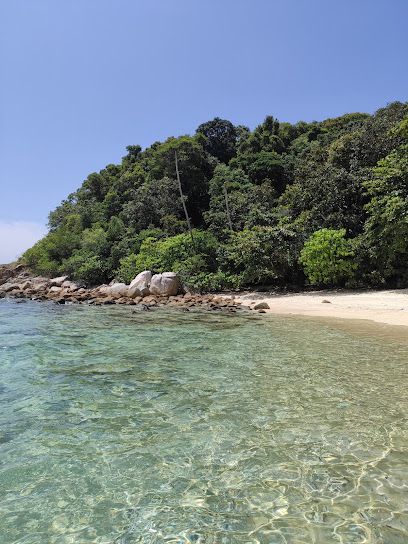
Boardwalk to Long Beach
Discover the enchanting Boardwalk to Long Beach on Pulau Perhentian Kecil, where tropical beauty meets unforgettable hiking adventures.

Rainforest Beach
Experience the tranquil beauty of Rainforest Beach, a hidden gem in Besut, Terengganu, where nature meets relaxation and adventure.
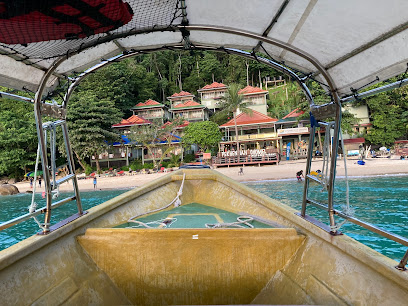
Coral beach
Explore Coral Beach: A serene escape with stunning sands and vibrant marine life on Pulau Perhentian Besar.

Essential places to dine
D'Lagoon Chalet & Restaurant
Discover culinary delights at D'Lagoon Chalet & Restaurant in Pulau Perhentian Kecil, where stunning views meet exquisite local cuisine.

Crocodile Rock Bistro
Discover culinary delights at Crocodile Rock Bistro near Rainforest Beach, where breathtaking views meet delectable dishes in paradise.

Joe's Perhentian
Experience exquisite seafood dining at Joe's Perhentian on Long Beach – where culinary delight meets stunning ocean views.

Awatif Cafe
Discover Awatif Cafe on Pulau Perhentian Kecil: A perfect blend of local flavors and stunning sea views for every traveler.

Ocean Blue Cafe pulau perhentian
Discover authentic Malaysian flavors at Ocean Blue Cafe on Pulau Perhentian Kecil—where culinary excellence meets stunning ocean views.

Daniela Cafe
Experience authentic Malaysian cuisine at Daniela Cafe on Pulau Perhentian Kecil, where every meal is a taste of paradise.

Mama's Restaurant
Experience authentic Malaysian cuisine at Mama's Restaurant on Pulau Perhentian Besar - where fresh seafood meets island charm.

Rosemarry Cafe
Discover authentic Malaysian flavors at Rosemarry Cafe in Pulau Perhentian Kecil - a must-visit dining experience amidst tropical paradise.

Ombak Cafe
Experience the flavors of Malaysia at Ombak Cafe on Perhentian Kecil - where culinary delight meets breathtaking island views.

Panorama Cafe
Discover Panorama Cafe: A culinary oasis on Long Beach offering delicious dishes and stunning views in Pulau Perhentian Kecil.

The World Cafe @ BuBu Villa
Discover culinary delights at The World Cafe @ BuBu Villa on Pulau Perhentian Kecil - where every meal is a feast for your senses.

Tuna Bay Restaurant
Experience delightful seafood and breathtaking views at Tuna Bay Restaurant in Pulau Perhentian Besar.

Fatimah Cafe Perhentian
Discover authentic Malaysian cuisine at Fatimah Cafe Perhentian - a culinary haven on Coral Bay that delights every palate.

The Barat Restoran
Experience authentic Malaysian cuisine with stunning ocean views at The Barat Restoran on Pulau Perhentian Besar.

Perhentian Cabana
Discover delightful local flavors at Perhentian Cabana, where stunning ocean views meet exceptional dining on Pulau Perhentian Besar.

Markets, malls and hidden boutiques
Coral View Island Resort
Experience the enchanting beauty of Coral View Island Resort, a tropical haven on Pulau Perhentian Besar with stunning beaches and vibrant marine life.

Long Beach
Experience the pristine beauty of Long Beach, a tropical paradise on Perhentian Kecil Island, perfect for relaxation, adventure, and unforgettable memories.

Turtle Beach
Discover Turtle Beach, a pristine escape in Terengganu featuring soft sands and crystal-clear waters perfect for relaxation and adventure.

Lata Air Berani
Explore the natural beauty and tranquility of Lata Air Berani, a stunning waterfall in Pulau Perhentian Besar, Malaysia.

Coral Bay
Discover the enchanting Coral Bay, a serene tropical paradise in Terengganu, perfect for diving, relaxation, and unforgettable sunsets.

Panorama Diver Perhentian
Discover the underwater wonders of Perhentian Island with Panorama Diver - your ultimate diving destination in Malaysia.

Cozy Chalet Perhentian Island
Experience the tranquil beauty of Perhentian Island at Cozy Chalet, your perfect getaway for relaxation and adventure in Malaysia.

Nia Cafe
Discover Nia Cafe on Perhentian Island for a delightful culinary journey with stunning views and warm hospitality.
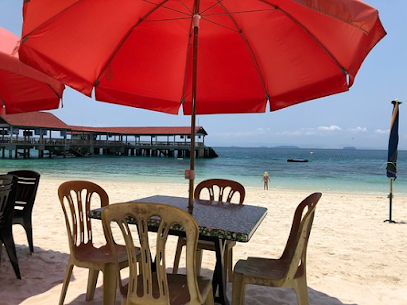
Cosmic Divers
Experience the breathtaking marine life of Pulau Perhentian Besar at Cosmic Divers, a premier diving center for all skill levels.
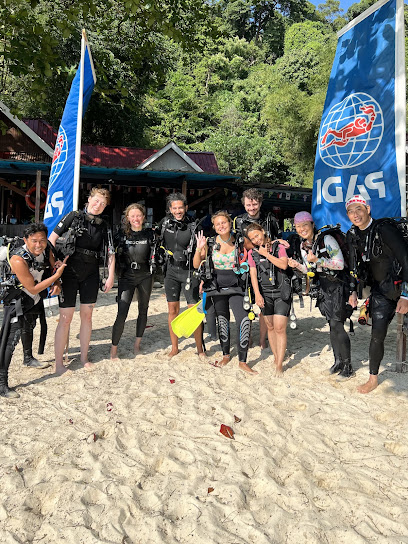
Shark Point
Discover the breathtaking underwater beauty of Shark Point, a top diving destination on Pulau Perhentian Besar, Malaysia, with abundant marine life.

Lekker Divers
Explore the vibrant marine life of Pulau Perhentian Kecil with Lekker Divers, your go-to destination for unforgettable diving adventures.

Quiver Dive Team
Explore vibrant coral reefs and diverse marine life with Quiver Dive Team, the premier dive shop in Pulau Perhentian Kecil, Malaysia.
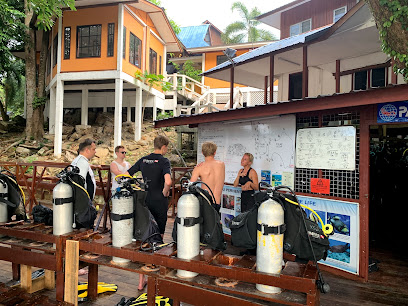
Octo Diver Perhentian Island
Discover the undersea wonders of Perhentian Islands at Octo Diver, your premier diving center for breathtaking underwater adventures.

Flora Bay Divers
Explore the underwater wonders of Perhentian Island at Flora Bay Divers, your gateway to exceptional diving experiences in Malaysia.

Leisure Divers
Dive into an unforgettable underwater adventure at Leisure Divers, the premier dive shop on Pulau Perhentian Besar, Terengganu.

Essential bars & hidden hideouts
D'Lagoon Chalet & Restaurant
Discover the tranquility and culinary delights at D'Lagoon Chalet & Restaurant on the beautiful Pulau Perhentian Kecil.

Crocodile Rock Bistro
Experience the vibrant flavors and stunning views at Crocodile Rock Bistro, a top dining destination on Pulau Perhentian Kecil.

Joe's Perhentian
Experience the Best of Terengganu’s Culinary Scene at Joe's Perhentian, Where Fresh Seafood Meets Stunning Ocean Views.

Ocean Blue Cafe pulau perhentian
Experience the taste of paradise at Ocean Blue Cafe, where fresh seafood meets breathtaking ocean views on Pulau Perhentian Kecil.

Mama's Restaurant
Discover the culinary delights of Mama's Restaurant on Pulau Perhentian Besar, where fresh seafood and local flavors meet stunning island views.

Pit stop station
Experience the authentic flavors of Malaysia at Pit Stop Station, a cozy restaurant on Pulau Perhentian Kecil, perfect for all travelers.

Ombak Cafe
Experience the flavor of paradise at Ombak Cafe, offering local and international cuisine with stunning views on Perhentian Kecil Island.

Panorama Cafe
Discover the culinary delights of Panorama Cafe on Long Beach, Pulau Perhentian Kecil – a must-visit for every traveler seeking great food and stunning views.

The World Cafe @ BuBu Villa
Discover a culinary paradise at The World Cafe @ BuBu Villa, where exquisite flavors meet stunning ocean views on Pulau Perhentian Kecil.

Perhentian Cabana
Experience the flavors of Malaysia at Perhentian Cabana, where stunning sea views meet delightful local cuisine on Pulau Perhentian Besar.

Bayu bistro
Experience the flavors of Malaysia at Bayu Bistro on Pulau Perhentian Besar, where fresh seafood and local cuisine meet stunning ocean views.
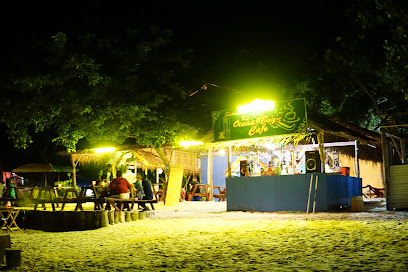
Beach Bar
Experience the ultimate beach getaway at Beach Bar in Terengganu, where relaxation meets adventure amidst tropical paradise.
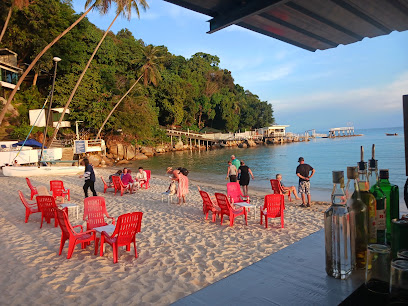
abbas bar
Discover Abbas Bar in Pulau Perhentian Kecil – a vibrant destination for relaxation, socializing, and enjoying stunning ocean views.

Ilhamku Cafe
Discover the serene Ilhamku Cafe on Pulau Perhentian Kecil, where fresh local cuisine meets stunning ocean views in a laid-back island atmosphere.

Snorkeling and BBQ
Discover vibrant marine life and savor mouthwatering barbecue at Snorkeling and BBQ on Pulau Perhentian Besar, the ultimate culinary adventure.

Local Phrases about Perhentian Islands
-
- HelloHai
[Hai] - GoodbyeSelamat tinggal
[Suh-lah-mat ting-gal] - YesYa
[Ya] - NoTidak
[Tee-dak] - Please/You're welcomeSila
[See-lah] - Thank youTerima kasih
[Tuh-ree-ma kah-see] - Excuse me/SorryMaaf
[Mah-ahf] - How are you?Apa khabar?
[Ah-pah kah-bah] - Fine. And you?Baik. Dan awak?
[Bah-eek. Dan ah-wahk] - Do you speak English?Boleh bercakap dalam Bahasa Inggeris?
[Boh-leh ber-chah-kap dah-lam Bah-hah-sah Ing-guh-riss] - I don't understandSaya tidak faham
[Sah-yah tee-dak fah-hahm]
- HelloHai
-
- I'd like to see the menu, pleaseBoleh saya lihat menu?
[Boh-leh sah-yah lee-hat meh-noo] - I don't eat meatSaya tidak makan daging
[Sah-yah tee-dak mah-kahn dah-ying] - Cheers!Sihat!
[See-hat!] - I would like to pay, pleaseBoleh saya bayar, terima kasih
[Boh-leh sah-yah bah-yar, tuh-ree-ma kah-see]
- I'd like to see the menu, pleaseBoleh saya lihat menu?
-
- Help!Tolong!
[Toh-long!] - Go away!Pergi!
[Per-gee!] - Call the Police!Panggil Polis!
[Pahng-geel Poh-lees!] - Call a doctor!Panggil doktor!
[Pahng-geel dohk-tor!] - I'm lostSaya sesat
[Sah-yah suh-saht] - I'm illSaya sakit
[Sah-yah sah-keet]
- Help!Tolong!
-
- I'd like to buy...Saya ingin membeli...
[Sah-yah in-geen mem-buh-lee] - I'm just lookingSaya hanya melihat
[Sah-yah hun-yah meh-lee-hat] - How much is it?Berapa harganya?
[Buh-rah-pah har-gahn-yah] - That's too expensiveItu terlalu mahal
[Ee-too tuhr-lah-lu mah-hahl] - Can you lower the price?Boleh kurangkan harga?
[Boh-leh koo-rang-kahn har-gah]
- I'd like to buy...Saya ingin membeli...
-
- What time is it?Jam berapa sekarang?
[Jahm buh-rah-pah suh-kah-rahng] - It's one o'clockPukul satu
[Poo-kool sah-too] - Half past (10)Setengah (sepuluh)
[Suh-tuh-ngah (suh-poo-loo)] - MorningPagi
[Pah-gee] - AfternoonPetang
[Puh-tahng] - EveningMalam
[Mah-lahm] - YesterdaySemalam
[Suh-mah-lahm] - TodayHari ini
[Hah-ree ee-nee] - TomorrowEsok
[Eh-sohk] - 1Satu
[Sah-too] - 2Dua
[Doo-ah] - 3Tiga
[Tee-gah] - 4Empat
[Um-paht] - 5Lima
[Lee-mah] - 6Enam
[Uh-nahm] - 7Tujuh
[Too-joo] - 8Lapan
[Lah-pahn] - 9Sembilan
[Suhm-bee-lahn] - 10Sepuluh
[Suh-poo-loo]
- What time is it?Jam berapa sekarang?
-
- Where's a/the...?Di mana...
[Dee mah-nah...] - What's the address?Alamatnya di mana?
[Ah-lah-maht-nyah dee mah-nah] - Can you show me (on the map)?Boleh tunjukkan saya (di peta)?
[Boh-leh toon-jook-kahn sah-yah (dee peh-tah)] - When's the next (bus)?Bila bas seterusnya?
[Bee-lah bahs suh-tuh-roos-nyah] - A ticket (to ....)Satu tiket (ke ....)
[Sah-too tee-keht (keh ....)]
- Where's a/the...?Di mana...
History of Perhentian Islands
-
The Perhentian Islands have been a significant waypoint for traders and seafarers for centuries. Their name, 'Perhentian,' which means 'stopping point' in Malay, reflects their historical role as a rest stop for merchants travelling between the Malay Peninsula and the South China Sea. Archaeological findings suggest that the islands have been inhabited intermittently since the prehistoric era.
-
During the colonial era, the Perhentian Islands became strategically important for the British Empire. In the 19th century, the British utilized these islands as part of their naval routes and for resupplying ships patrolling the region. The islands' strategic location helped maintain British naval dominance in Southeast Asia.
-
During World War II, the Perhentian Islands fell under Japanese occupation from 1941 to 1945. The islands were used as a strategic base for Japanese naval operations in the region. Local folklore recounts stories of Japanese soldiers and their interactions with the island's inhabitants during this tumultuous period.
-
After World War II, the Perhentian Islands returned to a quieter existence until the late 20th century when tourism began to flourish. In the 1970s and 1980s, the islands started attracting backpackers and divers drawn by the pristine beaches and coral reefs. The Malaysian government's focus on tourism development in the 1990s further boosted the islands' popularity as a travel destination.
-
In recent decades, the Perhentian Islands have become a focal point for marine conservation efforts. The establishment of the Pulau Redang Marine Park in 1991, which includes the Perhentian Islands, aims to protect the region's rich marine biodiversity. Efforts to preserve the coral reefs, marine life, and the overall ecosystem are ongoing, involving both governmental and non-governmental organizations.
-
The Perhentian Islands are home to a small, predominantly Malay population that has maintained traditional ways of life. Fishing remains a primary occupation for many locals, although tourism has become an important source of income. The islands' culture is a blend of Malay traditions and the influences of traders and settlers who have passed through over the centuries.
Perhentian Islands Essentials
-
The Perhentian Islands are located off the coast of northeastern Malaysia in the state of Terengganu. The nearest airport is Sultan Mahmud Airport in Kuala Terengganu. From the airport, you can take a taxi or bus to the coastal town of Kuala Besut, which serves as the main gateway to the islands. The journey from Kuala Terengganu to Kuala Besut takes about 1.5 to 2 hours by road. From Kuala Besut, you can catch a speedboat or a ferry to the islands. The boat ride typically takes 30 to 45 minutes.
-
Once on the Perhentian Islands, the primary modes of transportation are water taxis and walking. There are no cars or motorbikes on the islands. Water taxis can be hired to travel between different beaches and points of interest. Walking is a great way to explore the islands' natural beauty, but be prepared for uneven terrain and bring appropriate footwear.
-
The official currency of Malaysia is the Malaysian Ringgit (MYR). Credit cards are accepted in some hotels and larger restaurants, but it is advisable to carry cash, especially for smaller establishments and activities like water taxis. ATMs are scarce on the islands, so it is wise to withdraw sufficient cash before arriving. Kuala Besut has several ATMs where you can withdraw money before taking the boat to the islands.
-
The Perhentian Islands are generally safe for tourists, but it's important to take standard precautions. Avoid isolated areas at night and keep an eye on your belongings. Petty theft can occur, particularly on crowded beaches. There are no specific high-crime areas targeting tourists, but staying vigilant and aware of your surroundings is always advisable.
-
In case of an emergency, contact the local authorities or your hotel staff for assistance. The Malaysian emergency number is 999. Medical facilities on the islands are limited, so for serious medical issues, you may need to be transported to the mainland. It is strongly recommended to have travel insurance that covers medical emergencies. For minor health issues, some resorts and dive centers have basic first aid supplies.
-
Fashion: Do wear lightweight, breathable clothing suitable for a tropical climate. When snorkeling or diving, use reef-safe sunscreen to protect marine life. Avoid overly revealing swimwear away from the beach. Religion: Do respect local customs and dress modestly when visiting villages. Public Transport: Do use water taxis responsibly and agree on the fare beforehand. Don't litter or damage the boats. Greetings: Do greet locals with a smile and a nod. A simple 'Hello' or 'Selamat' (Malay for peace) is appreciated. Eating & Drinking: Do try the local seafood and traditional Malay dishes. Don't waste food, as it is considered disrespectful.
-
To experience the Perhentian Islands like a local, venture beyond the popular Long Beach and Coral Bay. Visit the local fishing villages to get a glimpse of daily life. Engage with the friendly locals who are often willing to share stories and tips. For a unique experience, take part in a traditional Malay cooking class or join a conservation effort to protect the islands' marine life. Don't miss snorkeling or diving at various sites around the islands, including the famous Turtle Bay and Shark Point.
Trending Landmarks in Perhentian Islands
Nearby Cities to Perhentian Islands
-
Things To Do in Kuala Terengganu
-
Things To Do in Cameron Highlands
-
Things To Do in Ipoh
-
Things To Do in Kuantan
-
Things To Do in Penang
-
Things To Do in George Town
-
Things To Do in Satun
-
Things To Do in Kuala Lumpur
-
Things To Do in Langkawi
-
Things To Do in Trang
-
Things To Do in Malacca
-
Things To Do in Nakhon Si Thammarat
-
Things To Do in Krabi
-
Things To Do in Koh Samui
-
Things To Do in Johor Bahru









